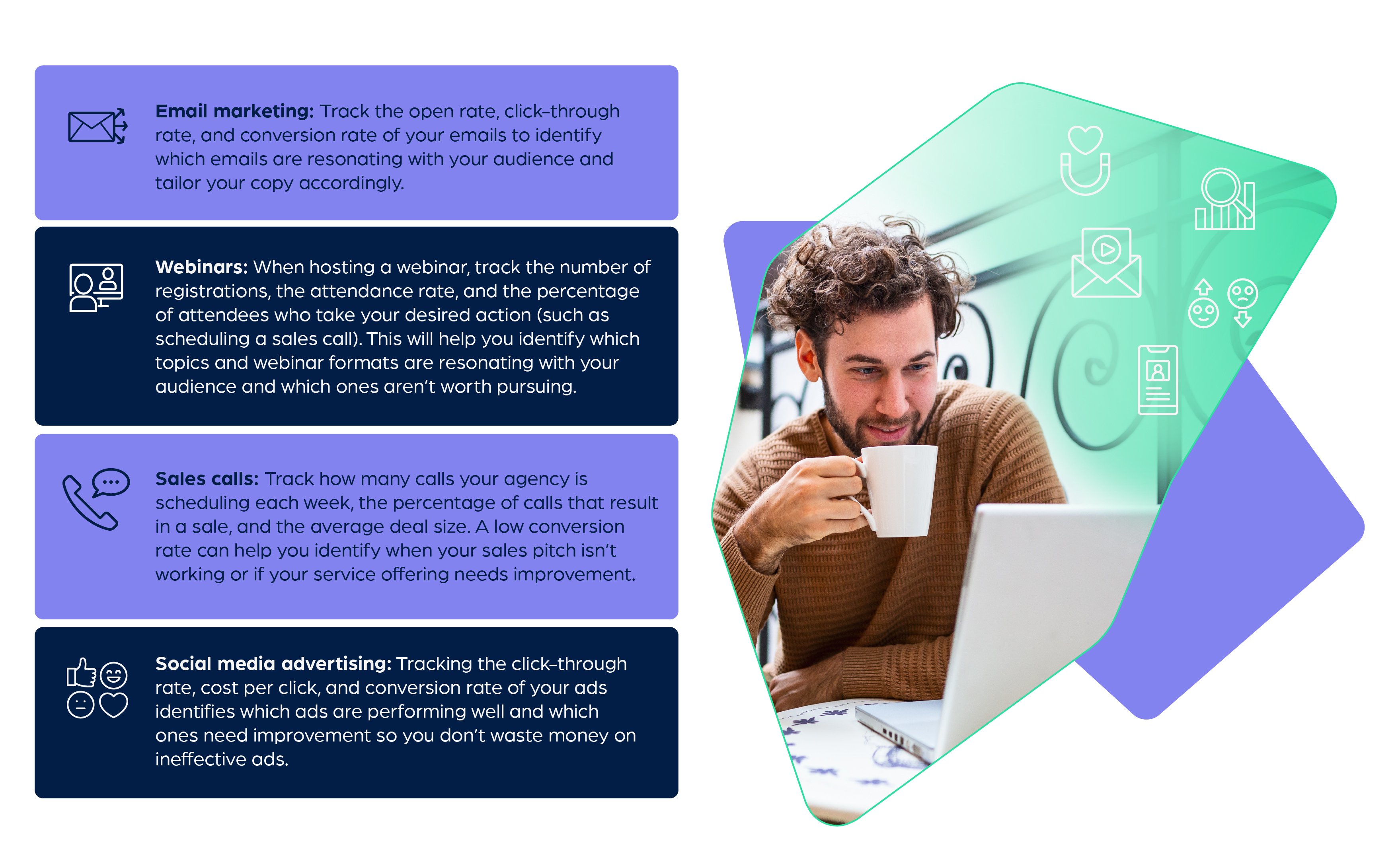
Imagine if your car didn’t have a speedometer.
Trying to avoid a ticket without knowing how fast you’re driving would be difficult - right?
If you wouldn’t risk a ticket by driving blind, then why are you doing it in your business?
When you make decisions for your agency without your numbers in mind, you’re seriously risking running it into the ground.
Not a numbers person? You’re not alone.
Many creative leaders excel at producing stellar work for clients but let their metrics and reporting fall by the wayside. But if you want to maximize the lifespan of your creative agency, you need to invite your business data along for the ride.
Why Are Marketing and Sales Metrics Important?
Are you guilty of making decisions for your business based on a “gut feeling” instead of hard data?
While this may work SOME of the time, your agency needs better odds to scale.
Data is crucial for transforming a decision from a guess into success. Tracking your metrics allows you to measure your performance, identify areas for improvement, and pursue effective marketing campaigns.
Conversion rate, lead-to-close ratios, customer lifetime value, and customer acquisition costs are all examples of useful metrics creative agency owners use to scale their businesses.
There are tons of decisions that can be made more effectively using data, such as:
-
Adjusting your marketing strategy based on what generates optimal open and engagement rates with your target market.
-
Determining which products or services are worth prioritizing by analyzing conversion rates and profit margins.
-
Use historical data to set achievable goals and keep your team motivated with wins.
Instead of wasting time implementing ineffective changes, get things right from the start when you regularly review this reliable, numerical data.
How to Collect Marketing and Sales Data
With thousands of different data-driving tools out there, how can you pinpoint what is best for your agency?
When bringing new tech tools into your agency, it is important they can generate the data YOUR agency needs. To determine the business requirements your new tech tool(s) should have, generate a list of all of the metrics you want to start measuring.
As you evaluate what tech is best for your business, consider these popular choices amongst creative agency owners:
-
Google Analytics: A free tool that tracks website traffic, user behavior, and conversions to better understand your customer’s behavior.
-
HubSpot: A comprehensive marketing and sales platform that includes features like email marketing, CRM, and lead tracking to help you save time by automating your sales process.
-
Zoho CRM: A CRM that helps you manage customer relationships, track leads, and generate comprehensive dashboards and reports to analyze agency performance.
-
Mixpanel: A tool that helps you analyze user behavior and engagement on your website.
While some are free, comprehensive tools (like Hubspot) will come at a cost. Ensure you spend enough time researching your options and comparing capabilities to your business requirements before bringing new technology into your agency.
Assigning KPIs to Your Marketing and Sales Funnel

Once you've identified the metrics you want to start using and know how you’ll generate the data, it’s time to assign Key Performance Indicators (KPIs) to each stage of your marketing and sales funnel.
KPIs are the benchmark outcomes you should be using to define success with every output your agency produces. With them, you can compare your actual outputs to your goal outcome to determine if your efforts were successful or not.
For example, consider a LinkedIn sales funnel. To evaluate how effective your outreach efforts are, consider tracking the percentage of connection requests that are accepted, outreach messages that receive a response, and calls booked from those messages. Presenting daily activities as numerical data helps hold the entire team accountable and helps you accurately forecast and capacity plan for future activities.
The next step is to assign KPIs (minimum scores you want to achieve) to each stage of the funnel, you can identify where leads are dropping off and make adjustments to improve your conversion rates. For example, if your KPI for accepted connection requests is 45% and this week you only achieved 25%, perhaps you didn’t target the right leads. You can now use this information to guide next week’s efforts and then compare.
Some KPIs you should consider introducing to your agency include:
-
Email marketing: Track the open rate, click-through rate, and conversion rate of your emails to identify which emails are resonating with your audience and tailor your copy accordingly. Open and click-through rates above 20% indicate your recipients are engaging well with your communication and are more likely to be receptive to what you have to say.
-
Webinars: When hosting a webinar, track the number of registrations, the attendance rate, and the percentage of attendees who take your desired action (such as scheduling a sales call). This will help you identify which topics and webinar formats are resonating with your audience and which ones aren’t worth pursuing.
-
Sales calls: Track how many calls your agency is scheduling each week, the percentage of calls that result in a sale, and the average deal size. A low conversion rate can help you identify when your sales pitch isn’t working or if your service offering needs improvement.
-
Social media advertising: Tracking the click-through rate, cost per click, and conversion rate of your ads identifies which ads are performing well and which ones need improvement so you don’t waste money on ineffective ads.
When you devote just 15-30 minutes each week to comparing your metrics and identifying areas for improvement, you can make data-driven decisions to help you achieve your business goals. Like driving without a speedometer, running a business without tracking your metrics is a surefire way to waste money and miss out on opportunities to scale.
Start tracking your metrics today and watch your business accelerate!
